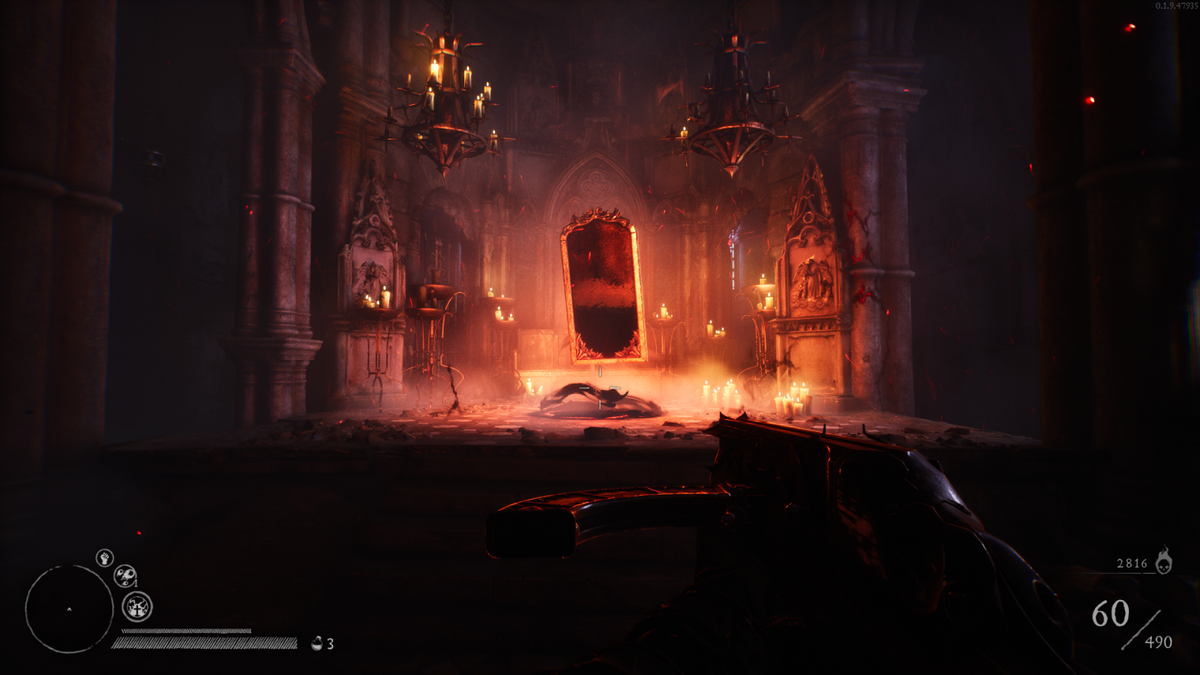
Witchfire is the latest game from The Astronauts, out for PC in early access on the Epic Games store. Players take on the role of a witch hunter, called a Preyer, in a post-apocalyptic world destroyed by the witch’s dark magic. Witchfire does a lot, and it is hard to nail down a complete description, but something along the lines of a souls-like, roguelite, fantasy fps gets most of the way there.
The current build of Witchfire, patch 0.1.7.47804 as of writing, gives the player access to the core gameplay loop over two maps with a limited selection of weapons, gear, and other upgrades. You start each session at your mountainside base of operations. From there you can craft healing potions, level up your character, research new weapons and abilities, select your loadout, and choose which map to enter.
Maps
Each map is unique in its design and visual presentation but the layout does not change between runs. The locations of enemies, traps, and interactables will be different every time you play though, as well as the player spawn location. The first step in a new run will be to look at the map and plan out what you want to accomplish. Whether you want to farm enemies for Witchfire or make a direct path for the boss, the map is your best friend.
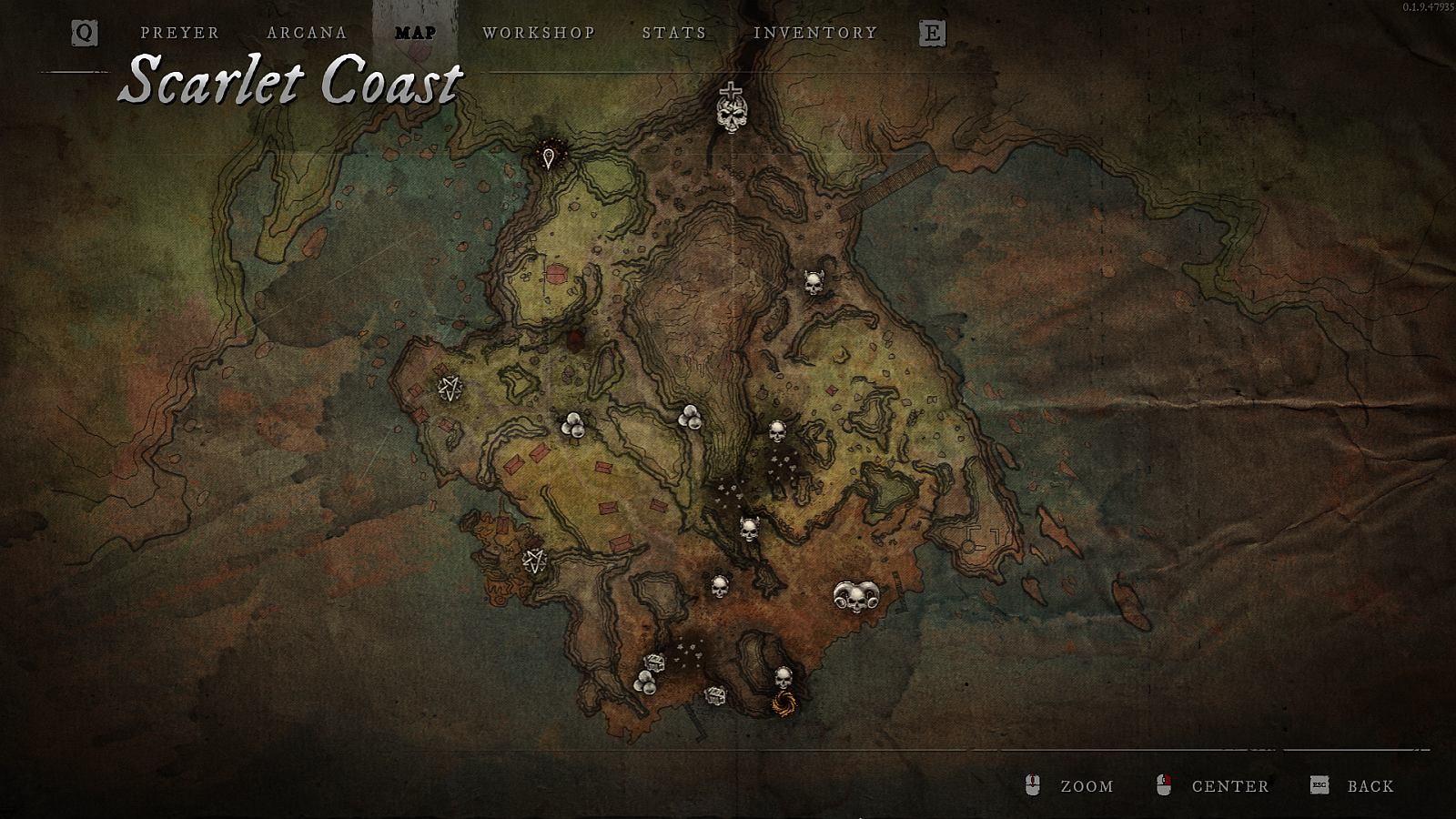
The Scarlet Coast is the first map available to you. The map is largely a circle with several bisecting paths. The circular nature of the map makes it easy to plot out where you want to go or avoid locations that you don’t want to deal with. There is a lot to take in here and on your first couple of runs it might be very easy to get distracted by the visuals and walk right into a group of enemies. The level design is gorgeous. The Scarlet Coast features several small villages, a quarry, mountain passes, and deserted battlefields. It’s large enough to give you a sense of scale and adventure as you traverse the map, but not so large that you spend minutes at a time running around with nothing going on.
The boss for the Scarlet Coast is an amped up variation of the common swordsman enemy with a few tricks up his sleeve. His attack patterns are familiar but the extra things he throws at you will likely take you a few runs to master. It’s a fun fight that will test your skills. Oddly, you reach the boss by jumping down a ravine which hits the player with fall damage. Health is very precious in Witchfire so taking damage just to access the boss fight feels bad. I’ve seen clips of players falling directly onto the boss without triggering fall damage which is even more odd. I’d prefer to see this removed in future builds, but it should at least be consistent.
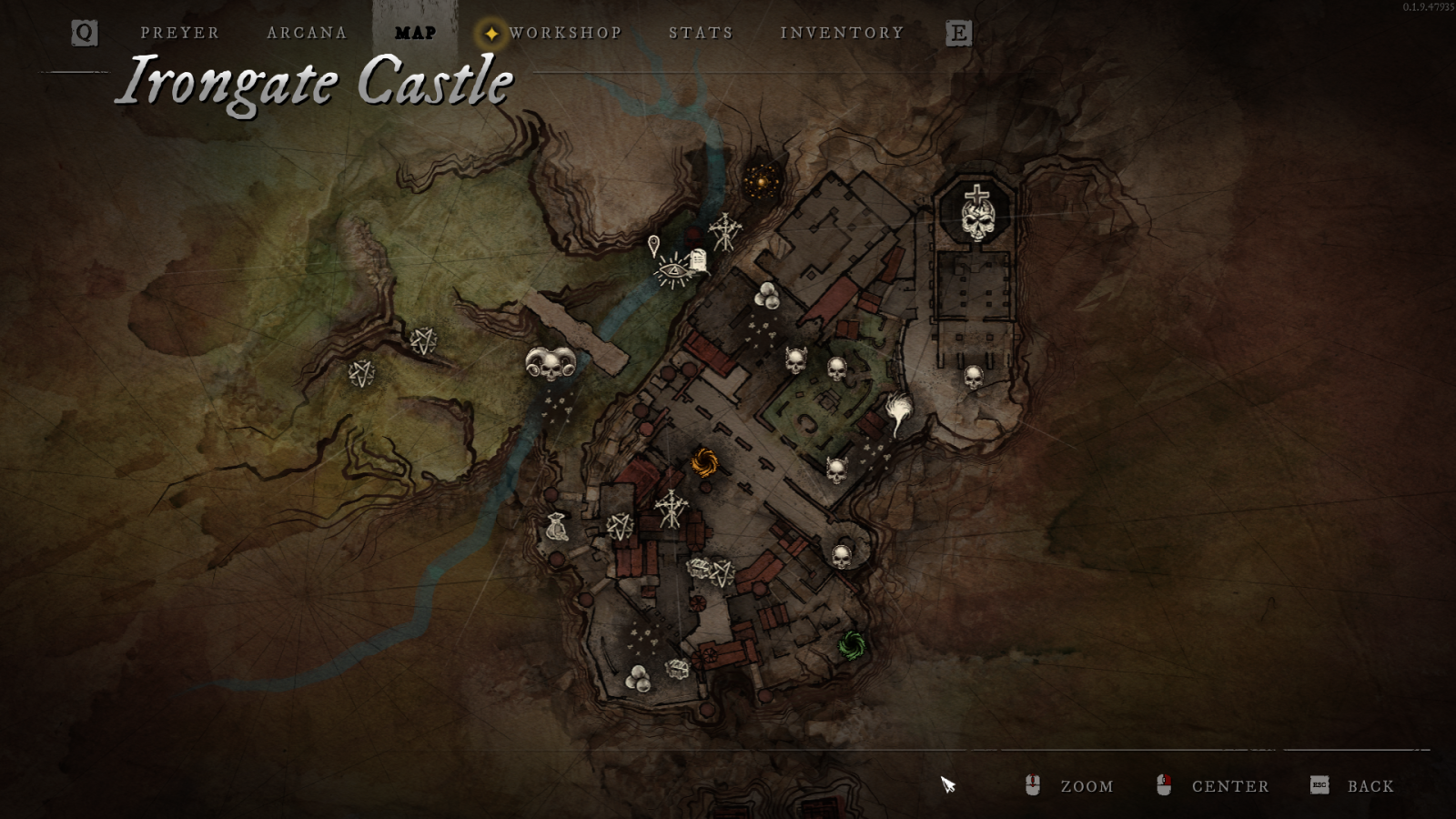
Irongate Castle is the second map and ramps up the difficulty even more. You will spawn somewhere outside of the castle and have to make your way to the gate. There are new enemy types and traps to discover along the way. Entry into the castle requires you have a Strange Coin, and to be honest, I have no idea where you get these. I happened to have eight of them when I went into the castle for the first time. Once you are in the castle, it’s a bit of a maze. Where Scarlet Coast was a convenient circle, Irongate Castle has multiple crossing pathways and elevation changes. The castle stands partially destroyed from some unknown battle and features rubble strewn courtyards and squares covered in burning debris. If you manage to fight your way to the cathedral in the back of the castle, you will encounter the boss.
The boss for Irongate Castle is a giant called the Galley Slave that is unlike any monster you will have seen before in the game. There are no familiar attack patterns with this guy, so be prepared for this one to take multiple attempts as you learn what he does. He wields a literal cannon and incorporates some magic and all kinds of jumping, leaping, and stomping attacks. His fight feels very different from the first boss, which is great.
There are four other maps waiting to be added to the game concluding with Witch Mountain and a battle with the titular Witch.
Enemies
Witchfire takes inspiration from other Soulslike games in that the enemies have distinct attack patterns that need to be learned and subsequently dodged. If you don’t, you will die… a lot. Every enemy in the game so far advertises its attacks and gives the player a chance to dodge. In a one-on-one fight it’s trivial to dodge around, but you will rarely be in a one-on-one. Attacking an enemy causes the rest of the enemies for that location to spawn in and usually features a blend of enemy types that you need to handle at once. The Astronauts have put a nice mix of attack types into the early access build already. You have everything from simple attacks you can side step, to things you need to time and dodge, to blinding and area effects. When you start out, you are probably going to die a lot, but the die and repeat loop is great feedback for learning the enemies quickly. There are currently 22 enemy types in the game with at least 46 planned for the final build.
Besides enemies, there are a number of traps that randomly spawn around the map. For the most part they are easy to avoid but if you do run into them, they can be devastating to your health. Some of them deal raw damage while others will spawn in enemies for you to fight. Like most aspects of the game, they are easy enough to deal with on their own but hitting a trap while also in a fight can make things pretty tough.
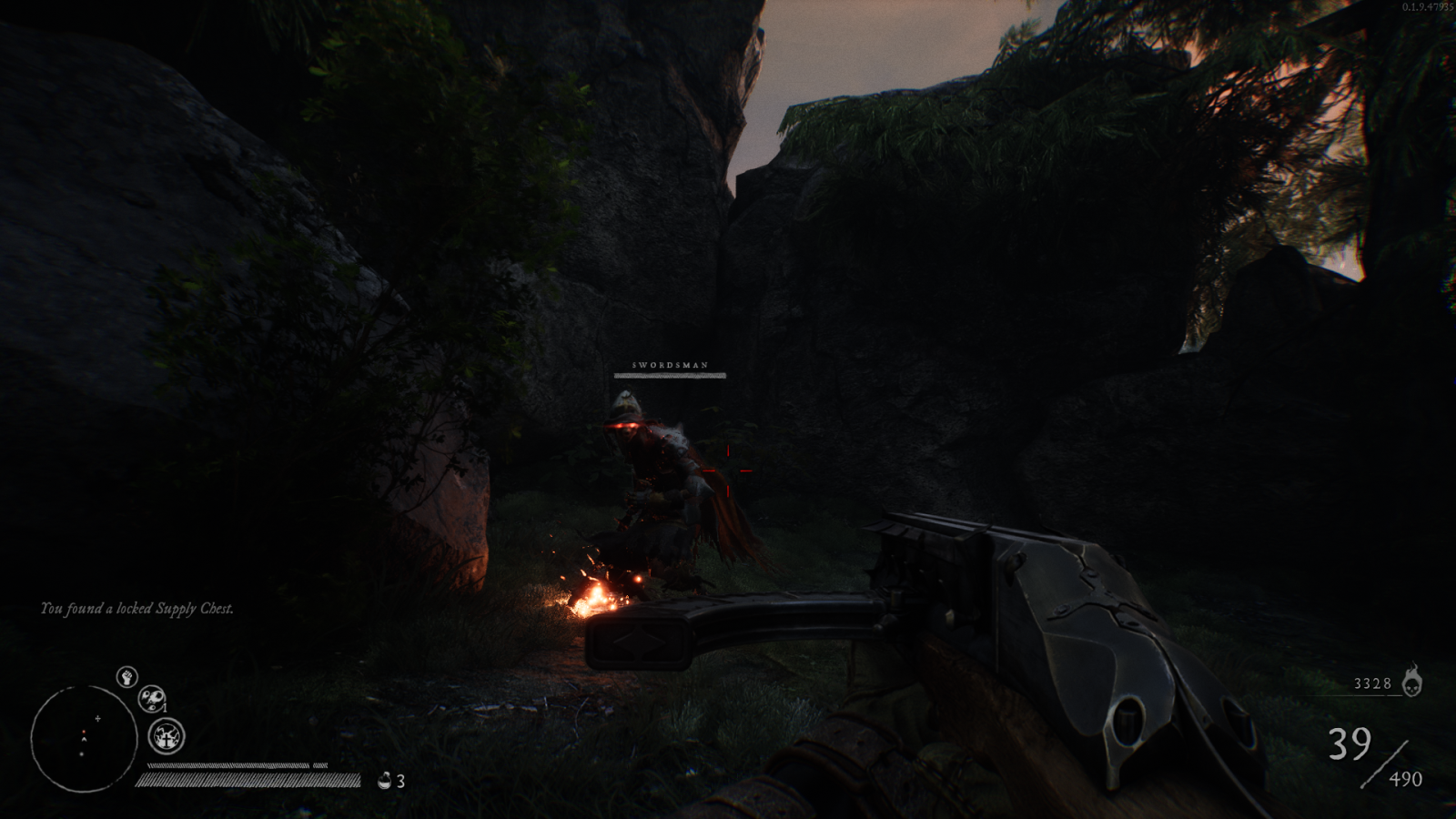
Maybe it’s safe to eat?
On top of enemies and traps, each level is also filled with interactables. Chests will spawn randomly and can be unlocked, locked, or staged ammo reserves. Locked chests need a key that is randomly dropped from enemies. Running out of ammo, especially early in the game, is not uncommon so incorporating an ammo chest into your run is often a necessity. Ammo chests are also the only way to get ammo for your demonic weapon.
You enter each run with precious few health potions. Keeping an eye out for angelweed, the only crafting ingredient currently in the game, is critical to keeping your healing potion supply up for each run. If you are in a bind and need some healing, you can also eat mushrooms found on the map. Someone on the design team is a fan of mushrooms, because there are multiple types and they are true to the real world as far as some being good to eat and others being poisonous. You can figure out which ones are the good ones through trial and error or else look up a guide.
The map also features several different events for you to interact with if the normal grind isn’t enough for you. They pretty much all revolve around spawning enemies to fight but are different enough that you won’t feel like you are doing the same thing every time.
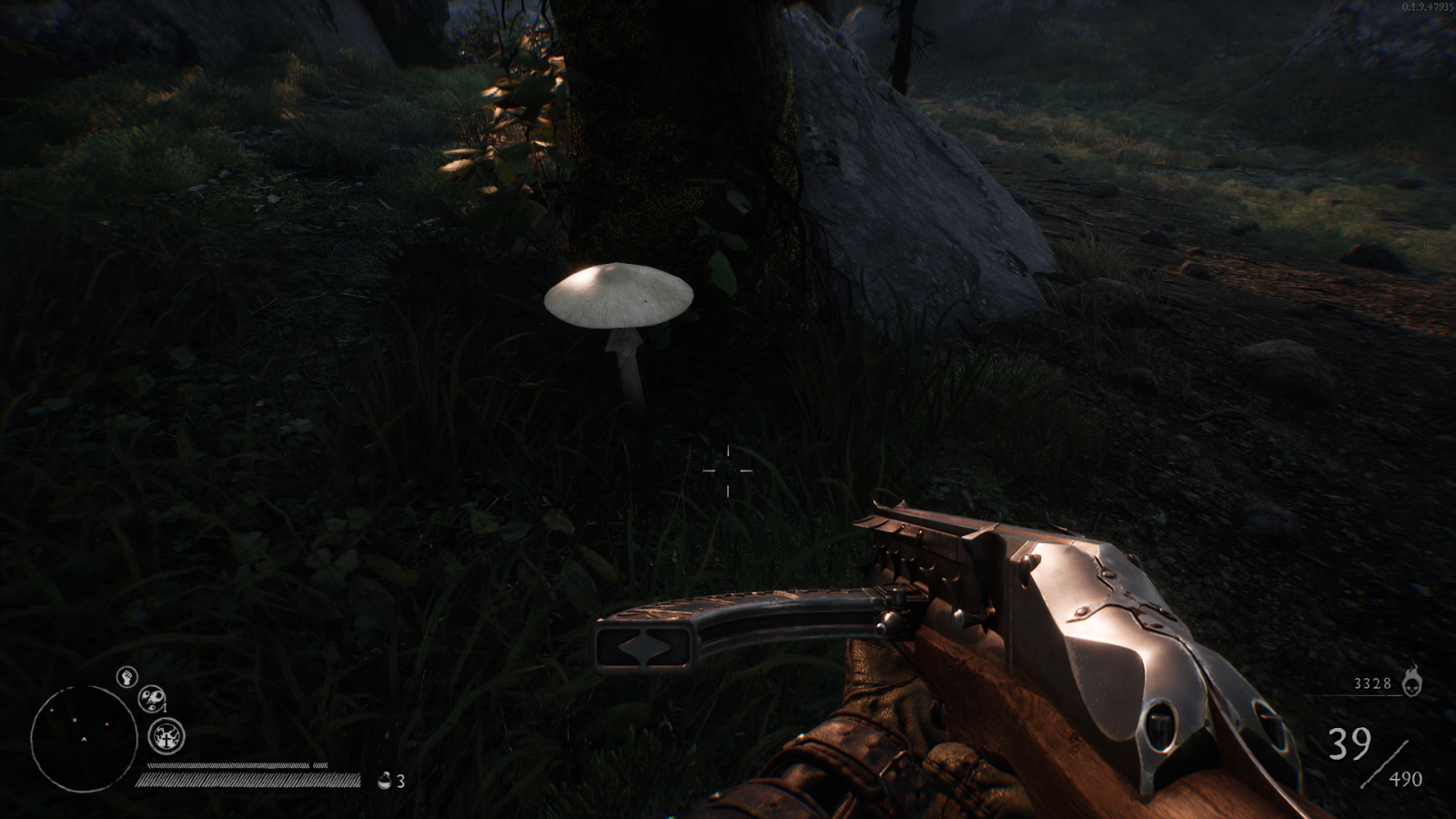
Roguelite
The gameplay loop of Witchfire is ideally to enter a level, get some XP and items, and then either defeat the boss or exit through a portal early. If you do either of those, you keep everything you’ve gained. If you die, you will lose any volatile witchfire you’ve gained, essentially money, as well as any special items you’ve found. Witchfire crystals are safe even if you die.
Between runs, you can unlock new weapons and items, upgrade your stats, and change your loadout. All of the weapons in the game so far are ranged weapons with all except for the demonic crossbow being guns. You start the game with access to a revolver and have to research the rest to unlock them. So far you have your basic pistol, shotgun, machine gun, sniper with some variation. Every weapon has three tiers with tier two and three unlocking new features and effects. All of the gunplay feels pretty good. The guns are responsive and the feedback from each one feels different and proper for its type. I’d like to see some melee weapons in future patches, but the current offering has a good variety to explore, especially with each one having those unlockable tiers that provide added effects. There are currently seven weapons in the game with an impressive 31 on the development roadmap.

Weapons aren’t the only way to deal damage. You can also unlock magical items that provide various bonuses and abilities. My favorite so far is a relic that strikes near death enemies with a bolt of lightning. You can equip a relic, a fetish, and a ring at the same time, combining effects and changing your playstyle.
While the enemies in the game are the result of the Witch’s dark magic, the player’s magic is apparently ok to use. You can equip a light spell and a heavy spell at the same time. Light spells recharge faster and are things like lightning bolts and fireballs while heavy spells have a longer reset time but have larger effects. I like to use the Iron Cross. A big metal cross drops from the sky and binds all enemies around it to the cross with lightning bolts.
Your character stats can also be permanently upgraded between runs by spending the witchfire you earn in the game. Volatile witchfire is what you get for every enemy you kill and is lost if you die. Witchfire crystals are safe from dying and can be cashed in at any time for volatile witchfire. Health, healing effectiveness, stamina, spell recovery, XP gain, and luck can all be upgraded. The costs of each upgrade increases with each level.
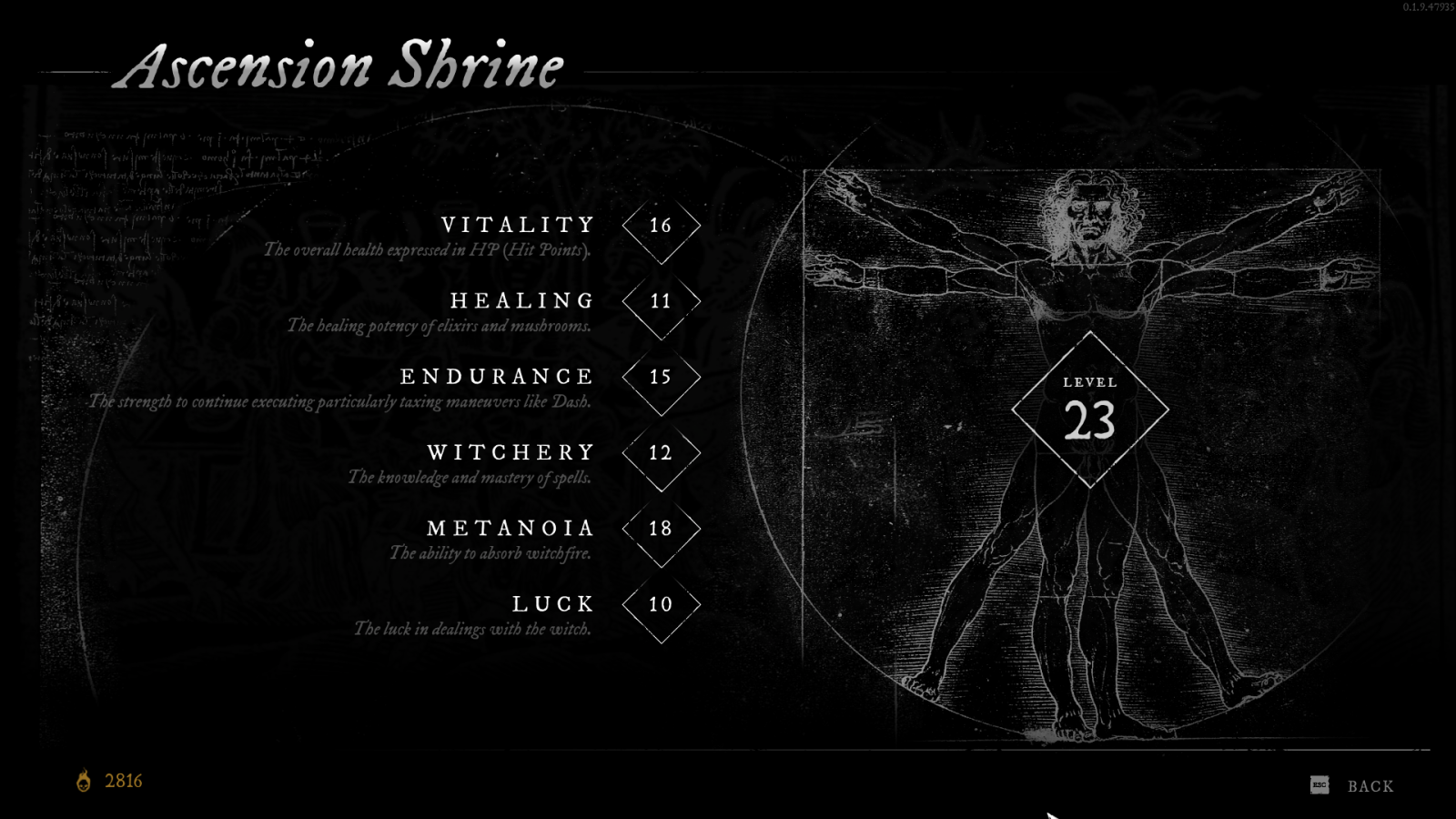
While you are in a level, you can earn temporary upgrades. Each location that you clear of enemies unlocks an arcana. You will randomly get two choices between Firearms, Spells, and Other, of which you can choose one to unlock. Opening chests and defeating enemies can drop feathers which can be used to reroll your arcana choices or to unlock the third option that you didn’t get to see previously. Arcana can make a big difference in your power level, so you usually want to unlock a few before challenging the level boss. Additional arcana options can be added to the random pool by researching them back in the player’s base.

Level scaling and difficulty
Witchfire is hard. If you are coming into this game as a Souls fan, then you will likely pick it up pretty quickly, but I think the FPS nature is going to attract a wider audience. Learning enemy attack patterns and dodging is critical to completing a run. You can expect to die a lot when you start out. The game is not very open as far as telling the player how to do everything. Whether that is intentional or just a feature of early access, I don’t know, but it will take time and repeated attempts to figure out what you are doing. That’s not a bad thing, and largely the chase of mastery is what makes the game so fun, but be aware before you purchase.
This game is hard. The difficulty is compounded by the game literally getting harder every time you level up. As you level up, the Witch increases the difficulty level as well. More enemies will spawn, elite enemies will spawn, traps will spawn, you get the picture. Send me a mocking email if you want to, but the reason this preview took so long to produce is largely because it just took that long to get good enough to make it past the first boss. I’ll blame my busy schedule, but in reality it took just over seven hours of game time for me to clear the first area.
Visuals
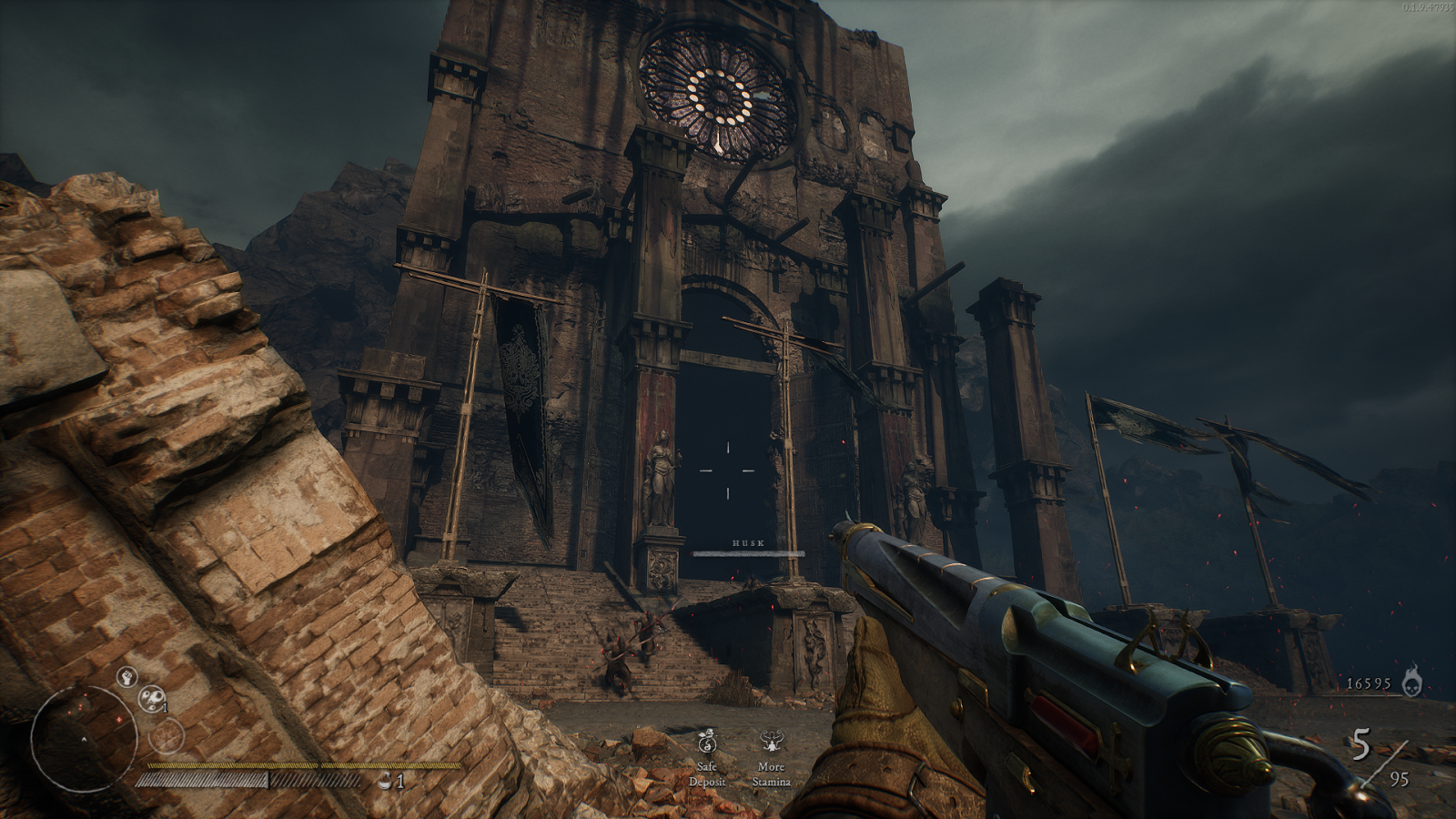
The visual design of Witchfire is what initially got me interested in the game. It is gorgeous. Full stop. The dark and gritty world feels real and alive and matches the post-apocalyptic dark magic setting perfectly. The occult religious inspiration for the Preyer, your character, is somewhat cliché but executed well. Everything from the menu fonts to the folded cloth looking maps has been deliberately designed to immerse you in this world.
Taking damage and being low on stamina both add visual effects to your screen that make it extremely difficult to see what is going on and can easily mean a death sentence. Player feedback has been strong enough on this one that the developer has added a toggle to disable this in the settings if you desire.
If you have a rig that can handle Ultra graphics in 4k, Witchfire is absolutely stunning. My RTX 2060 runs High settings with ease, but does have some stuttering on Ultra. The commitment to the dark and gritty atmosphere looks and feels great but can lead to some visual confusion in the thick of battle. Once you get used to it though, it’s not really a problem.
Updates and Early Access
The Astronauts have been very responsive to player feedback so far, and the game has received several patches in the roughly four weeks since its launch. They have been quick to squash bugs and improve player experience. The roadmap they shared anticipates major updates roughly every two months but without committing to a hard schedule. Early access is expected to last for about a year.
Deciding to pick up a game in Early Access is never a clear decision. I am always hesitant myself since you never know if the developer is going to follow through and finish the game. For $40, Witchfire is a little light on content right now with only two maps, but the experience you get already is very fun. Even just one more map, and I would have no qualms with recommending this one right now so if you’re reading this and it’s no longer October 2023 then definitely check it out and see what’s been added. The responsiveness of The Astronauts so far gives me confidence that they are committed to seeing Witchfire to full release and getting to provide feedback and experience the game as it develops is pretty cool. The core loop is very satisfying if you’re up for the challenge and I can’t wait to see what they add next.
Witchfire is off to a great start in early access. The core gameplay loop is extremely satisfying to master and challenging enough to keep you invested. It has that “just one more run” effect that is the mark of a great roguelite. Keep an eye out as Witchfire continues to develop.
